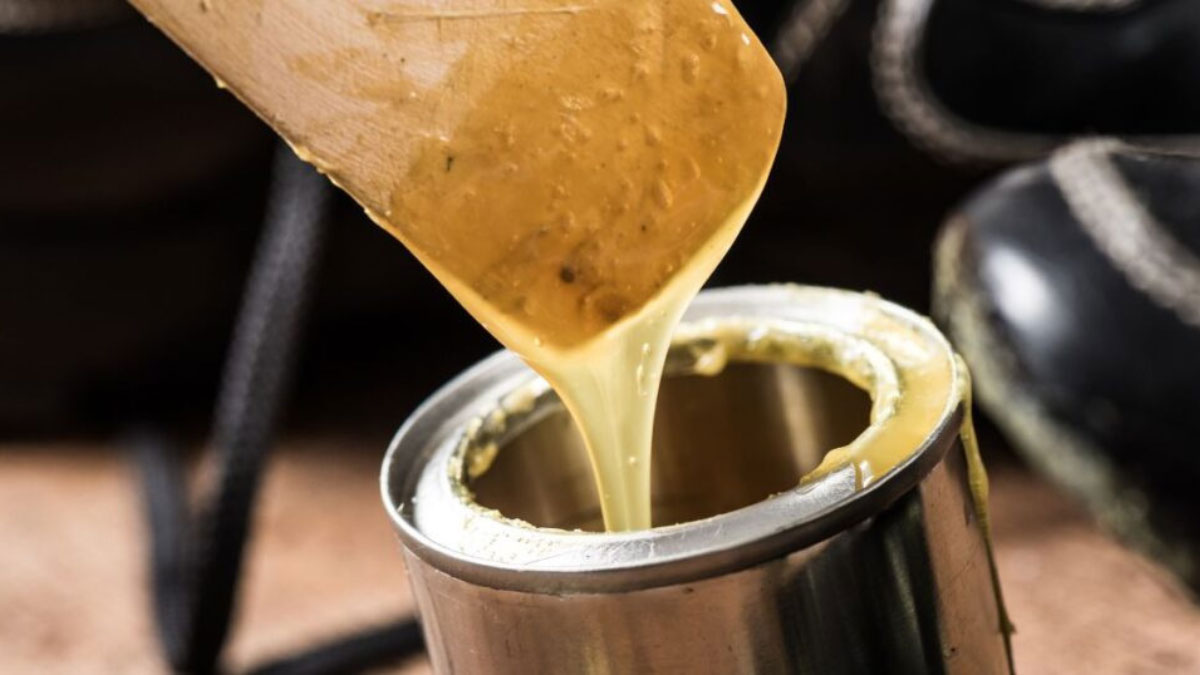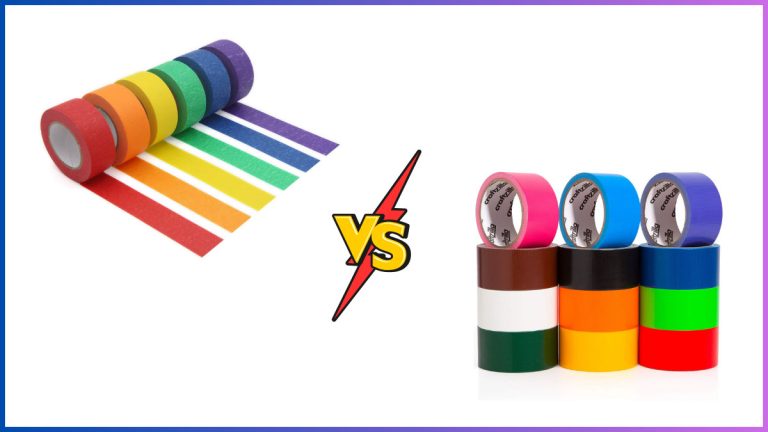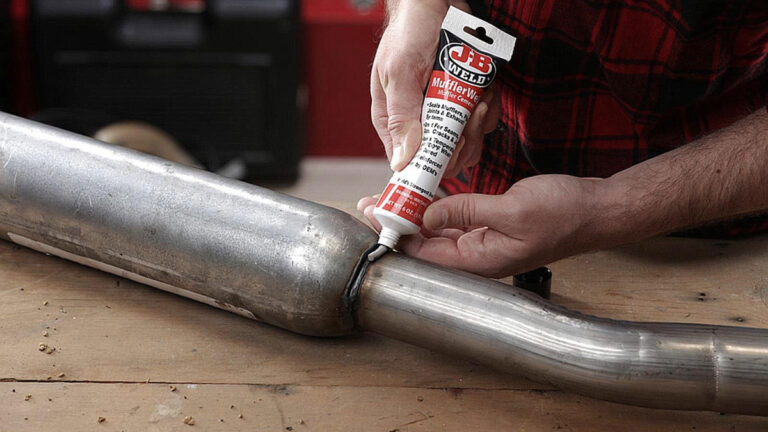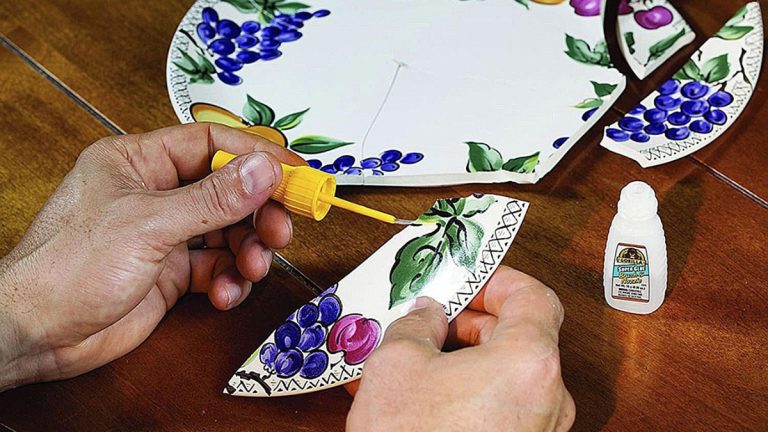Glue for Rubber: Best Adhesives for Strong, Flexible Bonds
When it comes to repairing or crafting with rubber, finding the right adhesive can make all the difference. Whether you’re fixing a torn rubber sole, creating custom rubber gaskets, or working on an automotive project, the right glue ensures a durable and lasting bond. But with so many options available, how do you choose the best one for your needs?
In this guide, you’ll discover the top adhesives specifically designed for rubber, along with tips on how to use them effectively. From cyanoacrylate to silicone-based glues, understanding the strengths and limitations of each type will help you make an well-informed choice. Let’s immerse and find the perfect glue for your rubber projects.
Key Takeaways
- Selecting the Right Glue: The right adhesive ensures a durable and lasting bond for rubber projects. Different rubber types require specific adhesives for optimal performance.
- Types of Rubber: Major rubber types include silicone rubber, nitrile rubber, natural rubber, and butyl rubber, each necessitating distinct adhesives based on their properties.
- Best Adhesive Options: Cyanoacrylate (super glue) is ideal for fast and strong bonds, while silicone adhesives offer flexibility and heat resistance, best suited for silicone rubber.
- Surface Preparation: Proper surface preparation, including cleaning and roughening, is crucial for enhancing adhesive performance and ensuring a strong bond.
- Curing Time & Conditions: Understanding the curing time and conditions for each adhesive type helps in planning and achieving optimal bond strength.
- Industry Applications: Rubber adhesives are vital in construction, medical, and automotive industries, used for sealing, gasketing, bonding components, and other specialized applications.
The Best Glue for Rubber
When it comes to choosing the best glue for rubber, understanding the type of rubber and desirable bonding properties is crucial. Different rubber types warrant specific adhesives to achieve optimal performance.
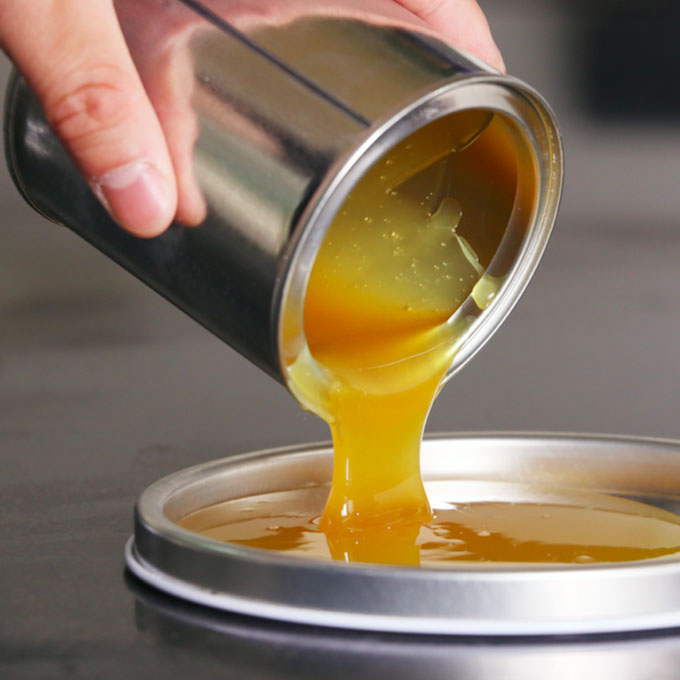
Types of Rubber
Let’s briefly recap the major rubber types:
- Silicone Rubber: Known for its heat resistance and flexibility, often used in automotive and medical applications.
- Nitrile Rubber: Commonly used in industries for its resistance to oil, fuel, and chemicals.
- Natural Rubber: Offers high elasticity and is widely used in products like tires and footwear.
- Butyl Rubber: Exhibits strong gas impermeability, making it ideal for sealing and insulation applications.
Adhesive Options
Here’s a succinct list of top adhesive choices:
- Cyanoacrylate Adhesives:
- Description: Often called super glue, known for strong and rapid bonds.
- Compatibility: Works exceptionally well with nitrile, butyl, and natural rubber. Less suitable for silicone rubber.
- Properties: Suitable for most applications but lacks flexibility and gap-filling capability.
- Silicone Adhesives:
- Description: Ideal for bonds requiring flexibility, heat resistance, and waterproofing.
- Compatibility: Best choice for silicone rubber. Less effective for other rubber types.
- Properties: Cures slowly and may not fill gaps effectively.
Comparison Table of Glue Types for Rubber
| Property | Cyanoacrylate Adhesives | Silicone Adhesives |
|---|---|---|
| Bonding Speed | Fast | Slow |
| Suitable Rubber Types | Nitrile, Butyl, Natural | Silicone |
| Flexibility | Low | High |
| Heat Resistance | Moderate | High |
| Waterproofing | Moderate | High |
Final Tips for Selecting Glue
Consider the following tips for selecting the best rubber glue:
- Assess Rubber Type: Determine the rubber type before selecting glue.
- Evaluate Bond Requirements: Consider required properties like flexibility, heat resistance, and waterproofing.
- Check Application Conditions: Factor in curing time and adhesive compatibility with your project’s specifications.
For successful rubber bonding, tailoring the adhesive choice to your specific rubber type and usage requirements guarantees robust and durable results.
Key Considerations for Rubber Adhesion
Understanding the key considerations for rubber adhesion ensures a durable and effective bond. This guide provides you with crucial points to consider when selecting and applying adhesives on rubber surfaces.
Identifying Your Type of Rubber
Identifying the type of rubber is essential for selecting the appropriate adhesive. Different rubbers have distinct chemical properties requiring specific adhesives.
Common Types of Rubber:
- Natural Rubber: Known for high tensile strength and elasticity.
- Synthetic Rubber: Examples include SBR, used in tires, and EPDM, known for weather resistance.
- Silicone Rubber: Resistant to extreme temperatures and commonly used in medical and electrical applications.
- Nitrile Rubber: Oil-resistant and often employed in automotive and aeronautical industries.
Surface Preparation Techniques
Proper surface preparation enhances adhesive performance. A clean, dry surface ensures the bond’s strength and durability.
Steps for Surface Preparation:
- Clean the Surface:
- Use solvents like acetone or alcohol to remove dirt, oil, and contaminants.
- Dry the Surface:
- Ensure no moisture remains before applying the adhesive.
- Roughen the Surface:
- Lightly sand the rubber to increase the adhesive’s grip.
Curing Time and Conditions
Adhesives require specific curing times and conditions to achieve optimal strength. Understanding these parameters helps in planning your bonding projects.
Adhesive Curing Information:
| Adhesive Type | Initial Bond Time | Full Cure Time | Ideal Conditions |
|---|---|---|---|
| Cyanoacrylate (Superglue) | Seconds to minutes | 24 hours | Room temperature, low humidity |
| Silicone Adhesive | Few hours | 24-48 hours | Room temperature, moderate humidity |
| Contact Cement | 15-20 minutes | Immediate upon contact | Dry, well-ventilated environment |
Evaluating Properties: Physical, Chemical, and Thermal
Assessing the physical, chemical, and thermal properties of both the rubber and adhesive guarantees the compatibility and longevity of the bond.
- Physical Properties:
- Flexibility: Essential for applications involving movement.
- Tensile Strength: Important for load-bearing bonds.
- Chemical Properties:
- Resistance to Oils and Solvents: Vital for industrial uses.
- Non-reactivity: Necessary to prevent degradation over time.
- Thermal Properties:
- Heat Resistance: Critical for high-temperature environments.
- Cold Resistance: Important for applications exposed to low temperatures.
Identifying the right combination of adhesive and rubber type, coupled with meticulous surface preparation and correct curing conditions, ensures a robust and lasting bond for various applications.
Types of Rubber Adhesives
Understanding the types of adhesives available for rubber applications is crucial for achieving the best results. Each type has its own strengths and is suited to different kinds of rubber and usage scenarios.
Cyanoacrylate Adhesives
Cyanoacrylate Adhesives:
- Description: Commonly known as superglue, cyanoacrylate adhesives are single-component instant adhesives that bond rapidly.
- Characteristics: These adhesives cure within seconds to minutes and reach full strength in 24 hours.
- Usage: Ideal for general-purpose applications, they work well on rubber, plastics, and metals.
Key Features:
- Rapid Curing Time: Bonds form within seconds to minutes.
- Strong Bonding: Particularly strong for rubber-to-rubber bonding.
- Ease of Use: Requires only a small amount applied to one surface before pressing the parts together.
Silicone-Based Adhesives
Silicone-Based Adhesives:
- Description: Silicone-based adhesives provide flexibility and elasticity. They’re often used when rubber needs to remain flexible.
- Characteristics: They offer excellent heat resistance and can be used in high-stress environments.
- Usage: Suitable for applications requiring flexible bonding of rubber and other materials.
Key Features:
- Flexibility: Maintains bond strength without becoming rigid.
- Heat Resistance: Withstands high temperatures, making it suitable for automotive and electrical applications.
Structural Acrylic Adhesives
Structural Acrylic Adhesives:
- Description: These adhesives are engineered to create durable bonds with high shear and peel strength.
- Characteristics: They provide a balance between flexibility and strong adhesion.
- Usage: Best suited for industrial applications where robust and resilient bonds are required.
Key Features:
- Durability: Offers high shear and peel strength.
- Versatility: Bonds different kinds of rubber as well as other substrates.
| Adhesive Type | Curing Time | Bond Strength | Flexibility | Heat Resistance | Suitable Applications |
|---|---|---|---|---|---|
| Cyanoacrylate | Seconds to minutes | High | Low | Moderate | General-purpose, rubber-to-rubber, plastics |
| Silicone-Based | Several hours | Moderate | High | High | Flexible bonding, automotive, electrical |
| Structural Acrylic | Minutes to hours | Very High | Moderate | High | Industrial applications, high-stress environments |
Selecting the right adhesive depends on the specific requirements of your project. For instant, strong bonds, cyanoacrylate adhesives are suitable. If flexibility and heat resistance are needed, silicone-based adhesives are ideal. For industrial applications requiring durable bonds, structural acrylic adhesives provide a reliable choice.
Bonding Rubber to Different Substrates
Choosing the correct adhesive for bonding rubber to various substrates is paramount. Each combination poses unique challenges and requires specific adhesive properties for effective bonding.
Rubber to Metal
When bonding rubber to metal, a specialized approach ensures a durable connection.
- Epoxy Adhesives: These adhesives offer high strength and withstands harsh conditions. They achieve a robust bond by chemically reacting with both the rubber and metal surfaces.
- Example: J-B Weld Epoxy forms a resilient hold suited for industrial applications.
- Specialized Industrial Adhesives: Some adhesives are tailored for specific industrial uses, providing superior performance.
- Example: Loctite AA 330 offers excellent adhesion for rubber-to-metal bonds.
Steps for Application:
- Clean both surfaces thoroughly.
- Roughen the metal surface with sandpaper.
- Apply the adhesive according to the manufacturer’s instructions.
- Clamp the materials together until the adhesive cures.
Rubber to Plastic
Bonding rubber to plastic requires a fast-acting adhesive that creates a strong bond.
- Cyanoacrylate (Super Glue): Known for its quick curing time, this adhesive works well with many plastic types.
- Example: Gorilla Super Glue gel is ideal for vertical surfaces due to its no-run formula.
Steps for Application:
- Clean the surfaces to remove any oils.
- Apply the cyanoacrylate sparingly.
- Press the rubber and plastic surfaces together.
- Hold or clamp for the required curing time.
Rubber to Rubber
Adhesives for rubber-to-rubber bonds must provide flexibility and strength.
- Silicone-Based Adhesives: These adhesives remain flexible after curing, making them ideal for rubber-to-rubber bonds.
- Example: Permatex Clear RTV Silicone Adhesive provides excellent flexibility and strong bonds.
- Contact Adhesives: Designed to bond large areas, they offer quick adhesion and durability.
- Example: DAP Weldwood Gel Contact Cement is useful for extensive rubber applications.
Steps for Application:
- Apply adhesive uniformly to both rubber surfaces.
- Allow the adhesive to become tacky.
- Press the surfaces firmly together.
- Allow curing according to the instructions.
| Adhesive Type | Suitable For | Bond Strength | Curing Time | Flexibility | Heat Resistance |
|---|---|---|---|---|---|
| Epoxy Adhesive | Rubber to Metal | High | Varies | Low | High |
| Cyanoacrylate | Rubber to Plastic | High | Fast | Low | Moderate |
| Silicone Adhesive | Rubber to Rubber | Moderate | Slow | High | High |
| Contact Adhesive | Rubber to Rubber | Moderate | Moderate | High | Moderate |
Making informed choices for glue ensures robust connections for durable results in your projects.
Common Applications and Industries
Adhesives play crucial roles across various industries. Rubber adhesives, in particular, have a wide range of applications that demand precision and specific properties for effective bonding. Discover how rubber adhesives fit into various sectors with these examples.
Construction and Manufacturing
In the construction and manufacturing industries, rubber adhesives are indispensable for their versatility and strong bonding properties.
Rubber Types and Adhesives:
- EPDM, Nitrile, Natural Rubber, Butyl: These types are commonly used in construction.
- Cyanoacrylate Adhesives: Known for fast curing times and strong bonds. Example: Permabond 105, which bonds various rubbers like Butyl, EPDM, Natural, and Nitrile.
Surface Preparation: Proper surface preparation ensures strong adhesion.
- Clean and Dry Surfaces: Essential for optimal bonding.
- Primer Application: Sometimes necessary for enhancing adhesion on materials like silicone rubber.
Applications: Rubber adhesives are used in:
- Sealing: Ensuring airtight and waterproof seals.
- Gasketing: Filling spaces to prevent leakage.
- Bonding Components: Assembling machinery and equipment.
Medical and Healthcare
Medical and healthcare industries demand specialized adhesives to meet strict safety and performance standards.
Specialized Adhesives:
- Medical-Grade Cyanoacrylates: Used for quick, strong bonds and often biocompatible.
- Silicone Adhesives: Provide flexibility and are used for sensitive applications like wearable devices and bandages.
Applications: These adhesives are used in various medical devices and patient care applications:
- Wearable Devices: Such as heart monitors and insulin pumps.
- Wound Care: Including bandages and surgical tapes.
- Prosthetics and Orthopedic Devices: Ensuring secure attachment and durability.
Automotive and Transportation
Rubber adhesives are also critical in the automotive and transportation sectors, where durability and performance are paramount.
Rubber Types and Adhesives:
- EPDM and Nitrile: Commonly used for automotive parts that require strong resistance to heat and chemicals.
- Structural Adhesives: Offer high shear and peel strength.
Surface Preparation: Involves before-adhesion steps for automotive uses.
- Degreasing: Removing oil and contaminants is crucial.
- Mechanical Abrasion: Enhances adhesive bonding by roughening surfaces.
Applications: Examples of rubber adhesive use in this sector include:
- Weatherstripping: Sealing doors and windows.
- Hoses and Belts: Bonding and repairing critical components.
- Body Seals: Ensuring airtight, watertight seals around doors and hoods.
| Industry | Common Rubber Types | Common Adhesives | Applications |
|---|---|---|---|
| Construction & Manufacturing | EPDM, Nitrile, Natural Rubber, Butyl | Cyanoacrylate | Sealing, Gasketing, Bonding Components |
| Medical & Healthcare | Various | Medical-Grade Cyanoacrylates, Silicone | Wearable Devices, Wound Care, Prosthetics |
| Automotive & Transportation | EPDM, Nitrile | Structural Adhesives | Weatherstripping, Hoses and Belts, Body Seals |
By appreciating the specific needs and solutions provided by rubber adhesives, you can select the best products for your projects, whether in construction, healthcare, or automotive industries. For further detailed specifications and technical data, considering consulting with adhesive manufacturers directly.
Conclusion
Choosing the right adhesive for your rubber projects is crucial for achieving durable and reliable bonds. By understanding the specific type of rubber you’re working with and the desired bonding properties, you can select the most suitable adhesive for your needs. Whether you’re using cyanoacrylate for quick bonds, silicone for flexibility and heat resistance, or structural acrylic for industrial strength, the key is to match the adhesive to your project’s requirements.
Proper surface preparation and curing conditions are equally important to ensure optimal adhesion. Clean and dry surfaces, along with appropriate roughening techniques, can significantly enhance adhesive performance. Always consider the physical, chemical, and thermal properties of both the rubber and the adhesive to guarantee compatibility and longevity.
By following these guidelines and making informed choices, you can achieve robust and durable results in your rubber bonding projects, ensuring success across various applications and industries.
Frequently Asked Questions
What is the best adhesive for rubber?
Cyanoacrylate (super glue) and silicone-based adhesives are among the best options for bonding rubber. Cyanoacrylate provides strong, quick-setting bonds, while silicone adhesives offer flexibility and heat resistance, suitable for high-stress environments.
How do I prepare the surface for bonding rubber?
Ensure the rubber surface is clean and dry. Use a mild soap solution to clean, rinse thoroughly, and allow it to dry completely. Roughen the surface lightly with sandpaper to enhance the adhesive’s grip.
Can I use epoxy adhesives for bonding rubber to metal?
Yes, epoxy adhesives are highly effective for bonding rubber to metal due to their strength and durability. Examples include J-B Weld Epoxy and Loctite AA 330, which offer excellent performance in such applications.
Is cyanoacrylate adhesive suitable for rubber-to-plastic bonding?
Yes, cyanoacrylate adhesives, like Gorilla Super Glue gel, are ideal for bonding rubber to plastic due to their quick curing time and strong bond. Ensure both surfaces are clean and roughened slightly for the best results.
What type of glue should I use for bonding rubber to rubber?
For rubber-to-rubber bonding, silicone-based adhesives and contact adhesives are recommended. They provide the necessary flexibility and strength to create a durable bond.
How long does it take for rubber adhesives to cure?
Curing times vary based on the adhesive type and environmental conditions. Cyanoacrylate adhesives typically cure within seconds to a few minutes, while silicone-based adhesives might take several hours to fully cure.
Can I use super glue on rubber shoes?
Yes, super glue, such as Loctite Shoe Glue, works well on rubber shoes, providing a strong bond. Ensure the surfaces are clean and dry before application for the best results.
What should I consider when choosing an adhesive for a rubber project?
Consider the type of rubber, required bonding properties (flexibility, heat resistance, etc.), and the substrate you are bonding to. Proper surface preparation and correct curing conditions are crucial for a strong bond.
Are there specific adhesives for industrial rubber applications?
Yes, structural acrylic adhesives are designed for industrial applications, offering high shear and peel strength. These adhesives are suitable for demanding environments, ensuring durable and reliable bonds.
What industries commonly use rubber adhesives?
Rubber adhesives are essential in construction, healthcare, and automotive industries. Each sector involves specific rubber types and adhesives, requiring proper surface preparation and adherence to application needs for optimal performance.

